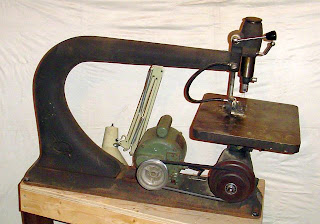Every year the members of the OldTools list holds a gift exchange match-up known as Galootaclaus. I haven't participated the past couple of years due to time (lack of time, and last year just plain missing the sign up), so this year I made sure to sign up in time and participate.
On Friday, I returned home from work to find my son bouncing with excitement. I had a hunch that this meant Galootaclaus had cleared the borders and arrived at our house. My wife confirmed this, and one of the projects for their day was creating a treasure hunt for me. I was presented with the first clue upon entering the home after work, and treated to a 10 riddle treasure hunt leading me to the package.
Upon opening the box, I discovered a nicely wrapped package - shown here by my lovely assistant.
 |
| (cat not included) |
Tearing into the paper, a wooden box with a very nice, fine stone appeared. I had assumed the lid had a decorative touch that had been added to it, but I was incorrect. When I looked closer, I discovered it was a separate piece that had been added on, and turned out to be a piece of leather - I imagine for final stropping/polishing.
This is a welcome addition to the shop. I have some inexpensive water stones, but am bad at touching up my edges while working due to the hassle of having to set them up since I don't have a large work area. This is a bad habit. Having a good stone at hand will go a long way to correct that. And having it in a solid case means I can make sure to have it with me when I travel.
I would like to thank my Galootaclaus for a great gift. And I just noticed from my last post: Galootaclaus 2008, that my gifter is Stephen Reynolds again. What are the odds...






























